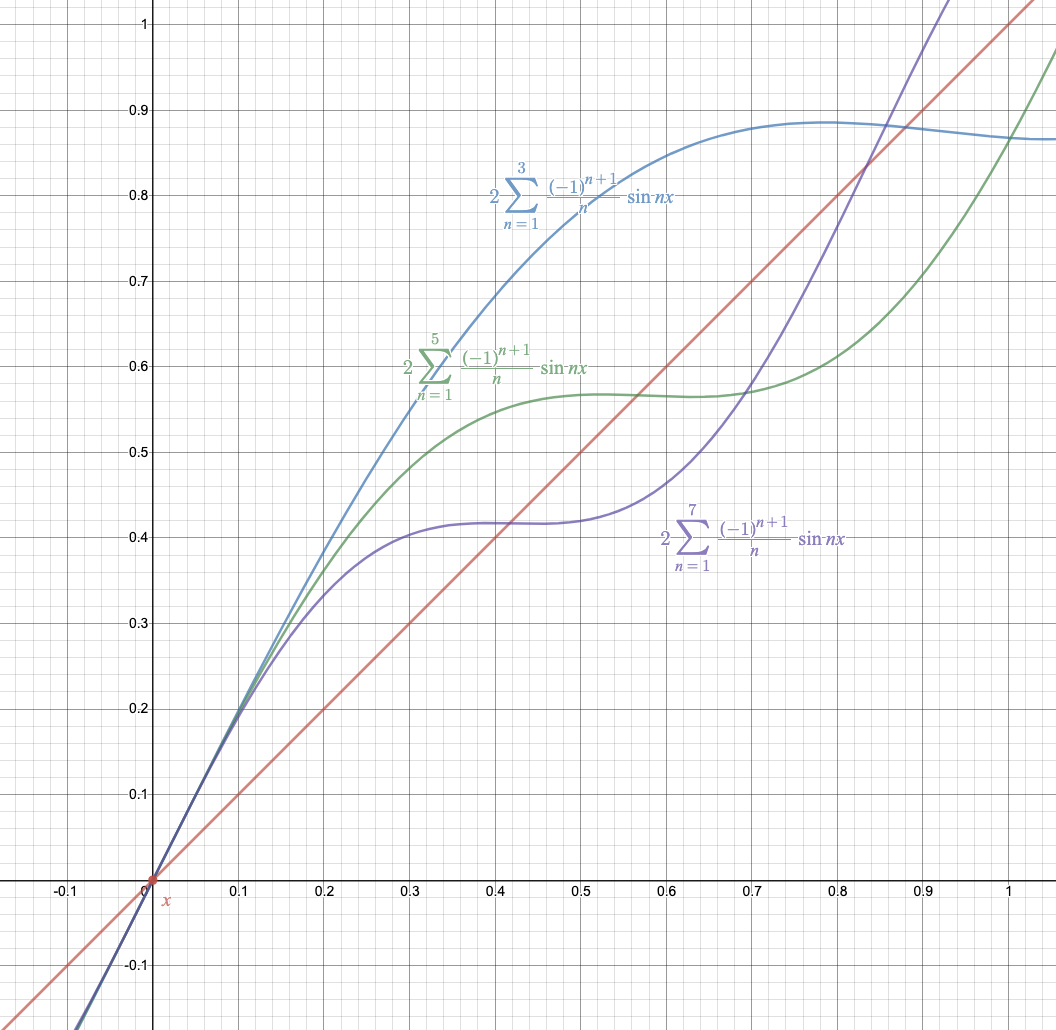Fourier Series w/ General Period
June 19, 2019
Fourier series for a period function $f(t)$ is defined as
where the coefficients are
Shorten the Calculations
f is even
Even function is s.t. $f(-t)=f(t)$. Odd function is $f(-t)=-f(t$). If a function is even, then its (of course this function is periodic) Fourier series only contains the cosine term.
First we see that if two functions are the same, their Fourier series must be the same because we’re supposed to get the same expansion in (1), and same coefficients (2) and (3). With an even function, we have $f(-t)=f(t)$. And notice that the Fourier series for $f(-t)$:
The sigh of sin change but cos is an even function so it’s the same. The original one stays the same as (1). Use (1)+(4):
$\blacksquare$
Do quick calculations we can have: as long $f(t)$ is even, $f(t)\cos nt$ is also even. With this we can shorten the formula of $a_k$:
f is odd
Similarly, if f is odd, we can get $a_n$ is zero. Because:
And (1)+(5):
A caveat is that odd function times odd function will still get odd functions. So we can shorten $b_k$ as well by similar form.
Ex. $f(t)=t$ on $[-\pi,\pi]$
Let’s take a look on this example. $f(t)=t$ is an odd function. So we will only $b_n$ left and
Therefore the Fourier series for $f(t)=t$ is
Let’s take few terms to see what it looks like. Let’s take 3 terms then

When # of terms get larger, the approximation swings more correctly to intertwine the straight line.
Convergence Theorem
If $f$ is continuous at $t_0$, then $f=sum\ of\ its\ Fourier\ Series$ at $t_0$. We see a periodic function is often not continuous at its break point like $\pi$. It jumps. If $f$ has jump discontinuity at $t_1$, then its Fourier series converges to the midpoint of the jump.
Extension # 1 for Fourier Series
We can generalize the period of $2\pi$ on (1) to $P=2L$, as long as $P>0$. Then the generalized version is
where
Extension # 2
If $f(t)$ is on $[0, L]$, we can do odd extension which make $[-L,0]$ is defined with $-f(t)$ or even extension with $f(-t)$.